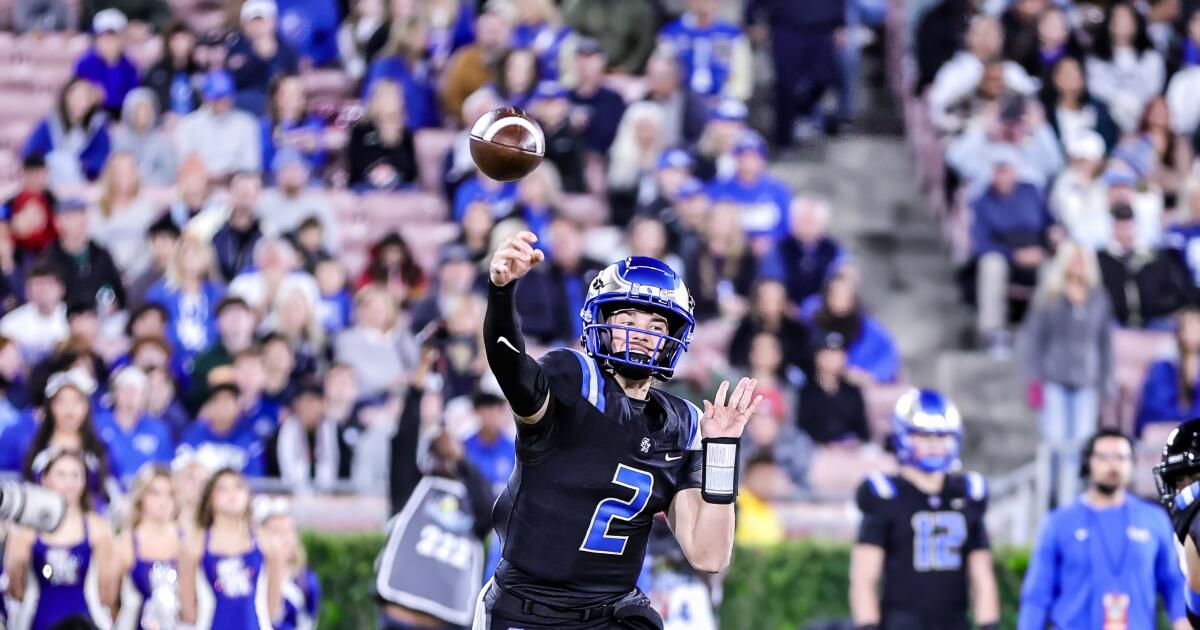
(© Photographee.eu – stock.adobe.com)
Data from chimps, gorillas, and humans reveal a smaller but consistent female advantage, reflecting weaker male competition in our species.
In A Nutshell
- Across 1,000 zoo species, females lived longer in most mammals, while males lived longer in most birds.
- Safe zoo conditions narrowed the lifespan gap but did not erase it, showing biology drives the difference more than environment.
- Mating systems played a major role: intense male competition and larger male body size shortened male lives.
- Humans fit the same pattern, with females living longer than males, though the gap is smaller than in chimps or gorillas.
- Exceptions like lemurs, raptors, and sea ducks reveal that social dominance and reversed size roles can flip the usual trend.
LEIPZIG, Germany — Scientists studying zoo animals have uncovered something unexpected: even when males live in safe, controlled environments with abundant food, no predators, and excellent medical care, they still die younger than females. This points to biology, not just lifestyle, as the driver of sex differences in longevity.
An international research team led by scientists at the Max Planck Institute for Evolutionary Anthropology analyzed lifespans of 528 mammal species and 648 bird species living in zoos worldwide. They found that 72% of mammal species showed a female advantage in adult life expectancy, with females living an average of 12% longer than males. The difference persisted despite zoos eliminating most environmental pressures that exist in nature.
When Safe Environments Can’t Close the Gap
These are animals that don’t hunt, don’t face predators, and receive veterinary care. Yet the sex gap in survival remained consistent across taxonomic groups from deer to primates to bats.
Researchers initially expected the pattern to align neatly with sex chromosomes. The leading theory, called the heterogametic sex hypothesis, predicts that whichever sex has mismatched sex chromosomes should die earlier. In mammals, males carry XY chromosomes while females have XX. In birds, the system flips: males are ZZ and females are ZW.
The data partially supported this. Birds did show the opposite pattern, with 68% of species exhibiting a male advantage and males living an average of 5% longer. But chromosomes explained the broad pattern between classes, not the wide differences within them. Some mammal species showed males living longer, and some bird species showed females outliving males, despite having the same chromosomal systems as their relatives.
Among mammals kept in zoos, researchers found strong evidence for a male advantage in 28 species, including some night monkeys, mole rats, and canids such as wolves and African wild dogs. In birds, 26 species showed a clear female advantage, concentrated in hawks, eagles, owls, and certain duck species.


The Mating System Connection
The study, published in Science Advances, tested whether mating systems could explain the variation. They categorized species as either monogamous, where pairs bond, or non-monogamous, including arrangements where males compete intensely for access to females.
Non-monogamous mammal species showed a 15% female advantage in zoos, while monogamous mammals showed virtually no sex difference in lifespan. The same relationship appeared across both zoo and wild populations, though differences were more pronounced in nature.
In non-monogamous species, males invest heavily in traits that help them compete: larger body size, aggression, elaborate displays. These traits come at the cost of shorter lives. The study found that male-biased size differences correlated with shorter male lifespans. Larger males died younger in species like deer and antelope where size differences between sexes are substantial.
Among primates, sex differences ranged from a 30% male advantage to a 33% female advantage. Monkeys with tighter social bonds and less male–male competition showed smaller gaps. Species where males fight intensely for dominance showed larger female advantages.


Where Humans Fit In
Humans fit squarely within this mammalian pattern. Data from zoo populations of gorillas and chimpanzees showed females living longer than males, consistent with populations studied in African forests. Human populations from 18th century Sweden to 21st century Japan to contemporary hunter-gatherers all demonstrated a female advantage, though the gap in humans was smaller than in closely related apes.
The human pattern likely reflects our evolutionary history of reduced male-male competition compared to gorillas and chimpanzees. Humans show less extreme size differences between sexes and have smaller relative testis size than chimps, consistent with weaker pressure from sperm competition.
Comparing zoo and wild populations revealed that environmental factors amplify differences rather than create them. In wild mammal populations, the female advantage reached 19%, compared to 13% in zoos. Among birds, wild populations showed a 27% male advantage compared to just 5% in zoos. The direction of the sex bias remained consistent between environments even as the magnitude changed. Safety narrows the gap; it doesn’t flip it.
Researchers analyzed 110 species with data from both environments. Most showed the same pattern in zoo and wild settings, though the size of the gap differed. Zoo environments reduce but don’t eliminate the fundamental biological forces shaping sex-specific survival.
Surprising Exceptions to the Rule
Exceptions to expected patterns appeared concentrated in certain families. Among songbirds, weavers showed a female advantage unusual for birds. Sea ducks inhabiting extreme northern latitudes also broke from typical bird patterns. Lemurs, despite being non-monogamous mammals, showed negligible sex differences in lifespan.
These exceptions suggest there are factors still missing from the picture. Reversed size differences in raptors, where females are larger, might explain their unusual female advantage. Social systems in lemurs, where females are dominant despite male XY chromosomes, may override typical mammalian patterns.
Surprisingly, species where females provide all parental care still showed longer female lifespans. That pattern hints that caregiving may select for longer lives. Primates showed the strongest version of this relationship.


The finding contradicts the simple idea that pregnancy and childcare shorten female lives. Instead, it supports an alternative: evolution may favor longer lifespans in the caregiving sex when offspring require extended parental investment.
Zoo environments likely reduce the physical toll of reproduction through managed breeding, abundant nutrition, and veterinary support. Yet the association between female care and female longevity persisted, pointing to deeper evolutionary trade-offs between reproduction and survival.
Annual egg or offspring productivity showed no association with sex differences in lifespan in either zoo or wild populations. Producing more offspring per year didn’t consistently disadvantage females relative to males.
Zoo populations offer a natural experiment. Removing predation, starvation, and disease isolates biological mechanisms from environmental noise. Because the gap persists even in comfort, biology — not just circumstance — does a lot of the work.
Paper Summary
Methodology
Researchers obtained individual birth and death records from Species360’s Zoological Information Management System, the most comprehensive database of animals in human care. The dataset covered 528 mammal species and 648 bird species across 20 mammalian orders and 31 avian orders, with records from 1980 to 2024.
The team used Bayesian survival trajectory analysis to estimate sex-specific survival patterns from age at first reproduction onward. They fit Siler mortality models, which account for declining juvenile mortality, constant background mortality, and increasing mortality from aging. Models were run using Markov chain Monte Carlo methods with strict convergence criteria.
Adult life expectancy was calculated as the expected age at death from the age of first reproduction. Sex differences were quantified as the proportional difference relative to whichever sex lived longer, ranging from -1 (100% male advantage) to +1 (100% female advantage).
For comparative analysis, researchers compiled life history data on mating systems (monogamous vs. non-monogamous), sexual size dimorphism (male and female body masses), testis mass, plumage differences in birds, annual offspring productivity, and parental care patterns. They analyzed associations using weighted Bayesian phylogenetic generalized least squares to account for evolutionary relationships between species.
A subset of 110 species (69 mammals and 41 birds) had published demographic data from wild populations, enabling comparison between zoo and natural environments. The team also incorporated human data from historical and contemporary populations, plus wild populations of great apes.
Results
Across zoo populations, mammals showed an average 12% female advantage in adult life expectancy, while birds showed a 5% male advantage. Among mammals, 72% of species exhibited female-biased lifespan, with 39% showing strong statistical evidence. Among birds, 68% showed male-biased lifespan, with 19% having strong evidence.
Male advantages appeared in 5% of mammal species, including wolves, African wild dogs, certain night monkey species, and naked mole rats. Female advantages appeared in 4% of bird species, concentrated among raptors and some waterfowl.
Wild populations showed larger sex differences than zoos. Wild mammals showed a 19% female advantage versus 13% in zoos. Wild birds showed a 27% male advantage versus 5% in zoos. The direction of bias remained consistent between environments for 68% of mammal species and 56% of bird species.
Mating system was the strongest predictor of sex differences in lifespan. Non-monogamous mammal species in zoos showed a 15% female advantage, while monogamous species showed negligible difference. Among birds, monogamous species showed a 5% male advantage. The effect was stronger in wild populations.
Sexual size dimorphism also predicted lifespan differences, with male-biased size associated with greater female advantages across multiple mammalian orders including ungulates, marsupials, rodents, and primates.
Female-biased parental care was associated with greater female life expectancy advantages rather than disadvantages. The relationship was strongest in primates. Annual offspring productivity showed no association with sex-biased lifespan.
Limitations
Zoo populations represent non-random samples of global biodiversity. Species held in zoos tend to be charismatic, easy to breed, or of conservation concern, which may skew class-level conclusions.
Controlled zoo environments may reduce the strength of associations between life history traits and survival differences. Abundant resources and managed reproduction reduce survival costs associated with growth and reproduction compared to wild populations.
Sample sizes for life history covariates were smaller than for basic lifespan estimates, reducing statistical power for detecting effects and testing consistency across environments.
Mating systems were categorized broadly as monogamous versus non-monogamous, which collapses considerable variation in social structure and reproductive behavior.
The study couldn’t definitively distinguish between competing hypotheses about mechanisms. Multiple factors likely operate simultaneously, including chromosomal effects, sexual selection, and parental care.
Funding and Disclosures
This work was supported by the National Institute on Aging, HUN-REN TKI Hungarian Research Network, National Research Development and Innovation Office of Hungary, Agence Nationale de la Recherche, National Scientific Research Fund, Région Nouvelle-Aquitaine, and other European and Hungarian research agencies. The research was made possible by the worldwide network of Species360 zoo and aquarium members. The authors declared no competing interests.
Publication Information
Staerk, J., Conde, D.A., Tidière, M., Lemaître, J.-F., Liker, A., Vági, B., Pavard, S., Giraudeau, M., Smeele, S.Q., Vincze, O., Ronget, V., da Silva, R., Pereboom, Z., Bertelsen, M.F., Gaillard, J.-M., Székely, T., & Colchero, F. (2025). Sexual selection drives sex difference in adult life expectancy across mammals and birds. Science Advances, 11, eady8433.








